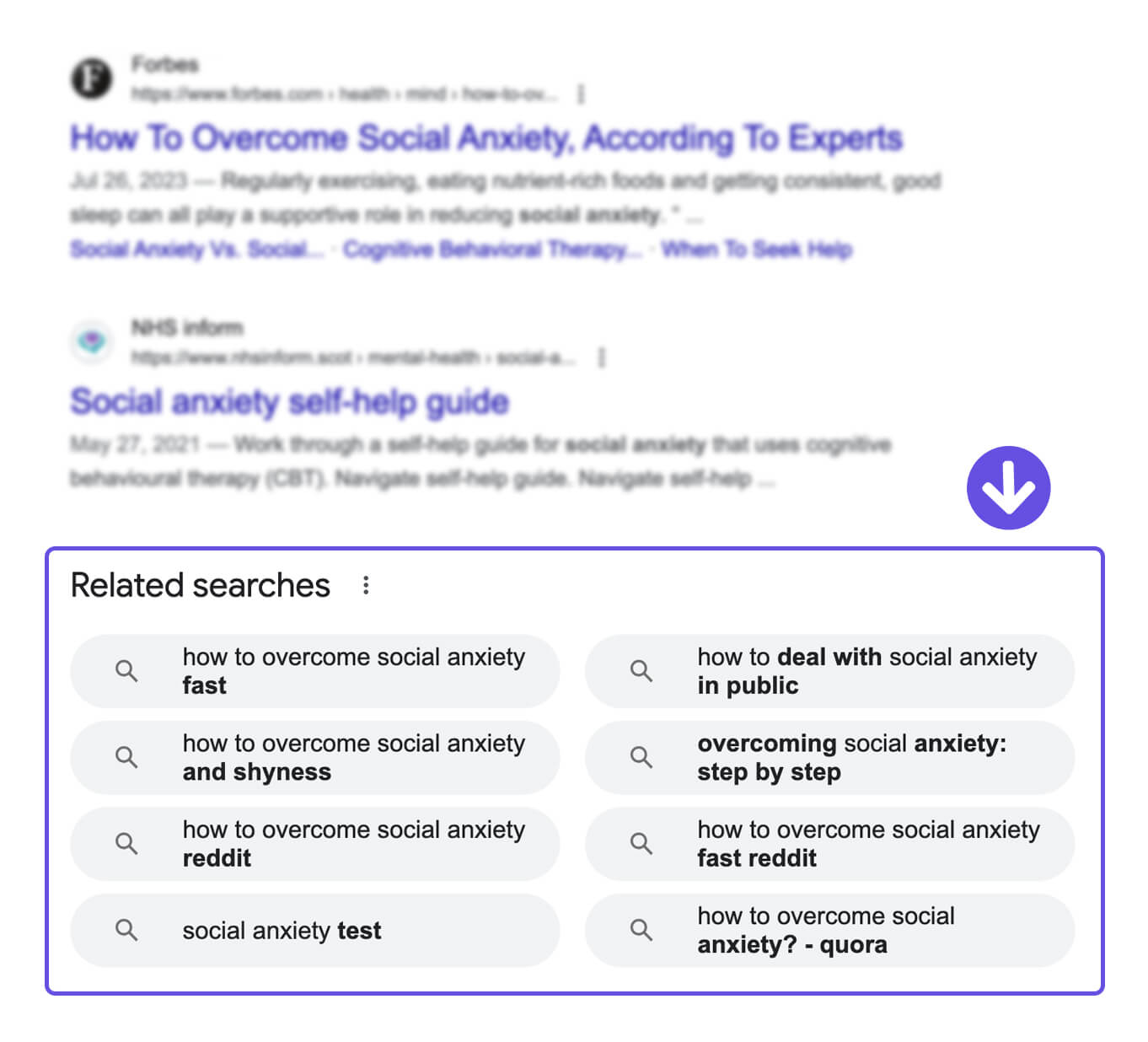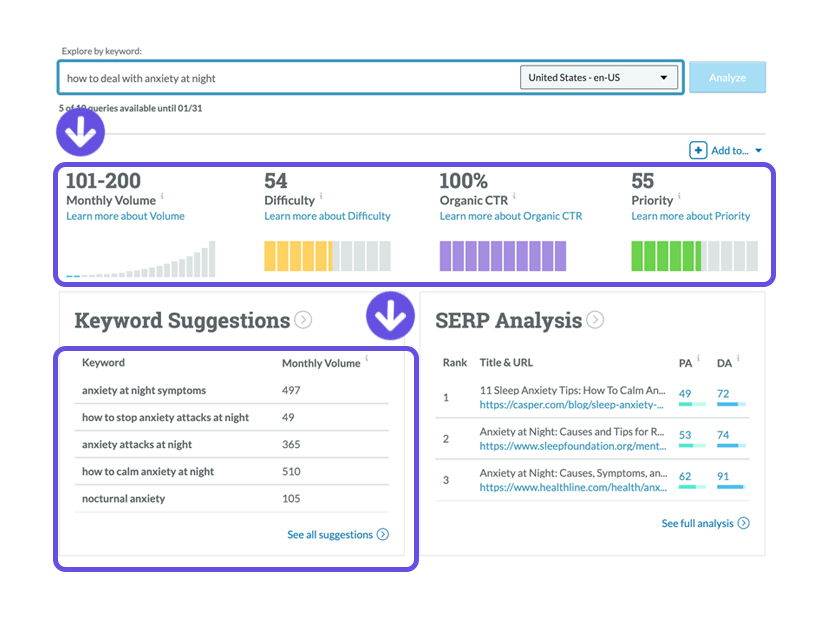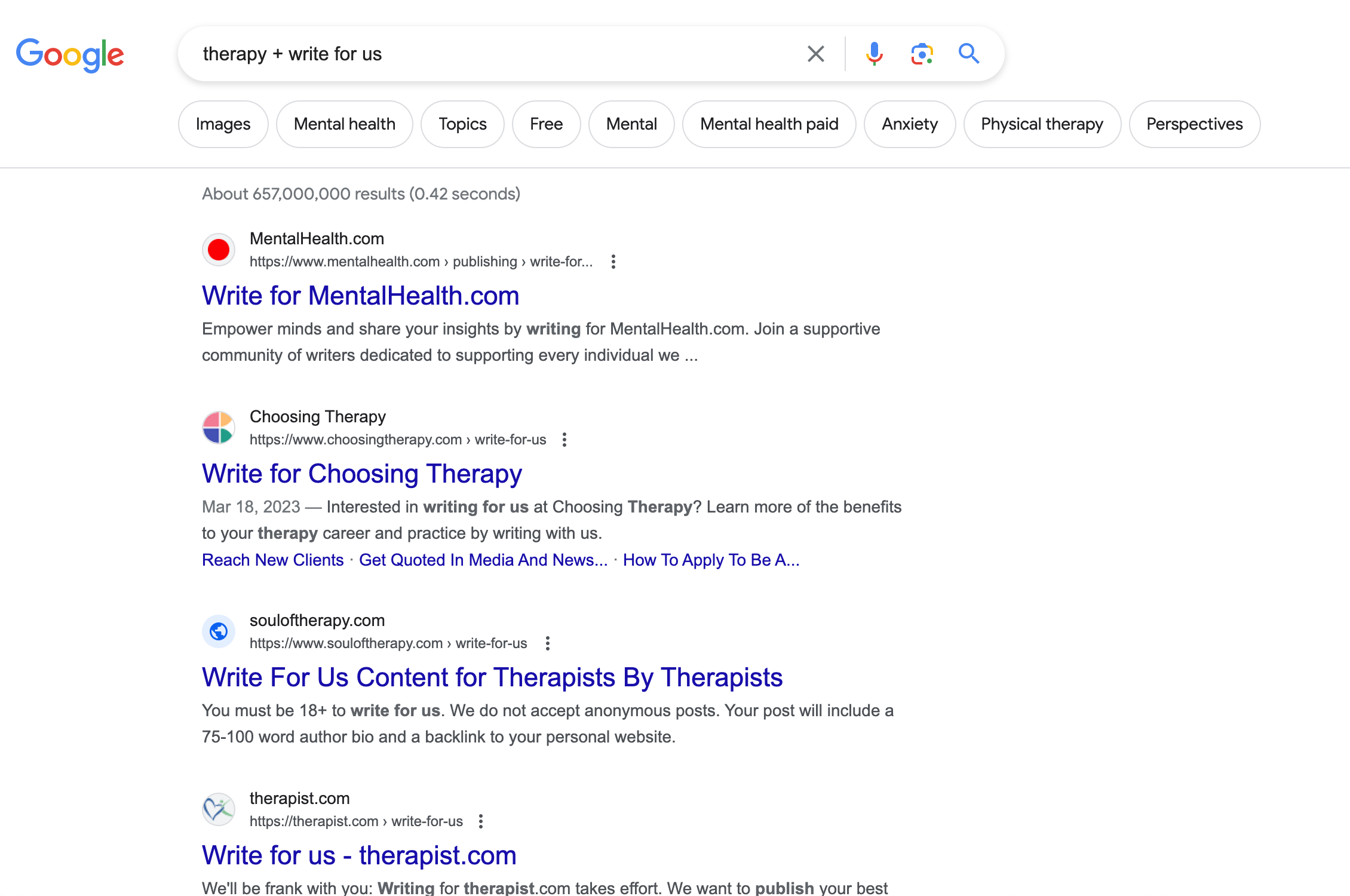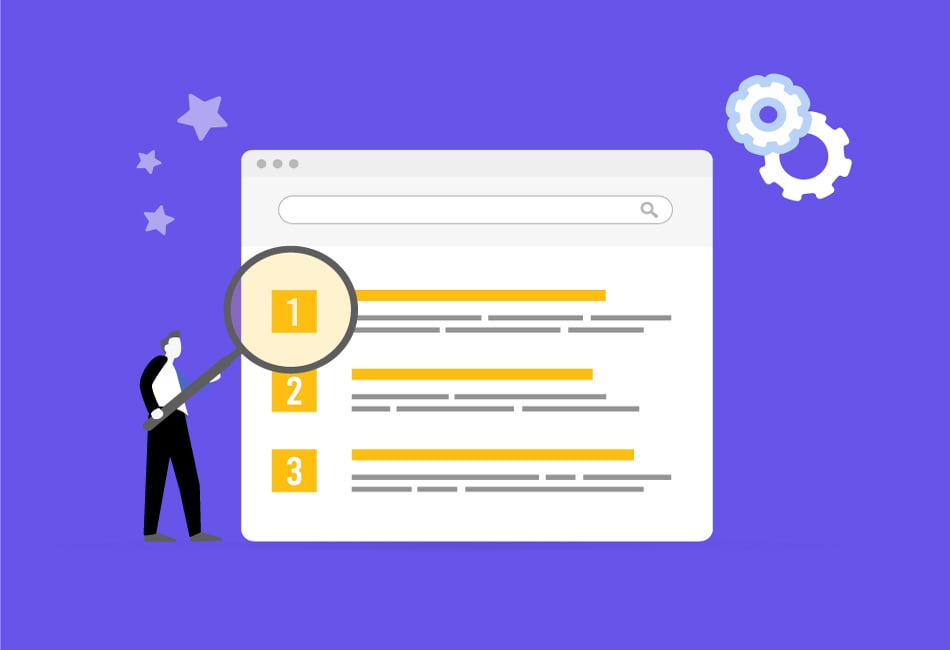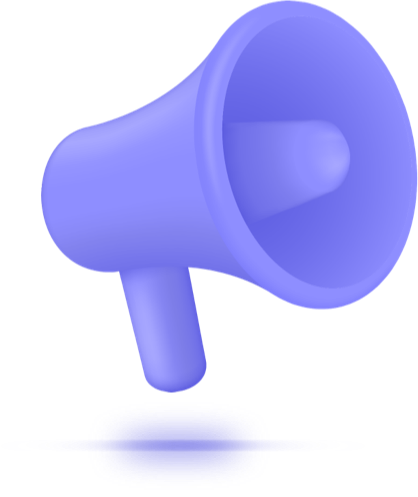In today’s digital age, having a robust online presence is essential for any therapist looking to grow their practice. One of the most effective ways to increase visibility and attract more clients is through search engine optimization (SEO). Therefore, we have created this SEO for therapists websites guide, aimed at helping you optimize your website for search engines and boost your visibility and leads.
Let’s get started; this guide will walk you through the seven key strategies and techniques for effective SEO:
Keyword research: Unlock the power of long-tail keywords
In this section, we will delve into the importance of keyword research, specifically focusing on harnessing the potential of long-tail keywords. Identifying and leveraging these often overlooked search terms can significantly enhance your SEO strategy. Let’s explore the nuances of keyword research and discover how integrating long-tail keywords into your content can substantially impact your online presence.
1. Long-tail keyword ideas
Long tail keywords, specific keyphrases containing three or more words, may have lower search volumes. However, they are often associated with higher conversion rates because users searching with long-tail keywords usually have a clear intent and are looking for something specific. For instance, someone searching for “therapist for social anxiety disorder near me” is more likely to convert than someone searching for “therapy.”
Moreover, you can utilize Google’s autocomplete to find commonly searched long-tail keywords related to therapy. As you type in the search bar, autocomplete will suggest popular searches. These suggestions reflect what users are looking for, aiding you in identifying specific queries to target in your content.
Pro Tip: To find even more long-tail keywords you can scroll to the bottom of the SERP page and look at “related searches.”
2. Analyze your competitor's keywords
Examining competitor keyword analysis is excellent for a successful SEO strategy for therapists’ websites. You can utilize tools such as SEMrush or Moz to find the keywords they rank for. Then, assess the search volumes and competitiveness to pinpoint gaps and opportunities for you to compete effectively.
However, it’s important to remember to use competitor keyword analysis as a guide, not the driving factor. You still need your strategy to remain relevant and align your plan with your unique value proposition.
3. Use keywords with local variations
Local variations are keywords or phrases targeting a particular geographical area or location. For instance, if your practice is in Los Angeles, including local variation keywords like “best therapist in Los Angeles” or “anxiety therapy in LA” can enhance your website’s ranking in local search results.
Additionally, integrating local keywords can help you target your geographic location better and boost visibility quicker than national rankings.
4. Understand the search intent of the keyword
Search intent is the underlying goal behind a user’s search query. Understanding the search intent for a target keyword allows you to tailor your content to meet the needs of the search query.
There are four types of search intent:
Informational
These searches refer to the user’s desire to acquire knowledge or information about a specific topic without necessarily intending to take a particular action.
Navigational
These searches typically involve searching the name of a specific brand, company, or website to access the desired destination directly.
Transactional
These searches refer to users actively seeking to complete a specific transaction or make a purchase online.
Commercial
These searches refer to users researching services. Examples of commercial search queries include “best [anxiety therapist],” or “reviews of [therapy].”

5. Balance Keyword Difficulty & Search Volume
Keyword difficulty is the level of competition for a specific keyword, and search volume indicates the number of searches for that keyword. SEO for therapists websites is best when striking a balance between these factors. Aim for keywords that have low difficulty but also have enough search volume to attract relevant traffic.
6. More keyword ideas: leverage google trends
Use Google Trends to gain insights into real-time trending topics and what people are searching for. One key feature is providing related queries and topics based on your initial keyword search. This will help you discover currently popular keywords, allowing you to optimize your content and stay ahead of the competition.
Content creation: Tap into your creative potential
This exploration will examine some of the critical attributes you need to consider when creating content for your website.
1. Creating new pages for keywords
As a rule of thumb, you should always create a new page anytime you are going after a new keyword. Avoid changing your existing URLs or too much of the copy on a page that is ranking already; this could hinder your SEO progress. If you have a webpage that has yet to get any rankings and has been published for a while, feel free to make updates to improve the SEO.
2. Analyze other therapist websites
When conducting SEO for therapists websites, analyzing competitors is essential for a successful online presence. Study their design, color schemes, and user experience. Please pay attention to the content they share, assess their SEO efforts, and evaluate their social media presence. Identify unique features, gaps, or weaknesses to inform decisions for positioning your website and gaining a competitive advantage.
3. Identify content ideas
Engaging with your potential clients through social media platforms like Reddit or other online forums can provide a wealth of content ideas as you observe and participate in conversations surrounding therapy and wellness. Be sure always to ensure your content idea aligns with a low difficulty/high volume long-tail keyword, as mentioned earlier in this article.
4. Utilize your blog posts
Blog posts are one of the best tools to gain valuable search traffic and new visitors to your website. It would be best to always focus on creating high-quality, informative, and engaging content that adds value to your readers. Use a conversational tone and include visuals like images or videos to enhance the reader’s experience. Consistency is crucial in blogging, so establish a regular posting schedule to keep your audience engaged and coming back for more, but only bite off what you can chew; quality is more important than quantity here.
5. Follow E-E-A-T principles
E-E-A-T stands for Experience, Expertise, Authoritativeness, and Trustworthiness. When creating content for your website, blog, or social media, you should showcase your expertise by providing accurate and up-to-date information, citing credible sources, and presenting your qualifications.
You can also demonstrate authoritativeness by showcasing endorsements, certifications, or affiliations with reputable organizations or individuals in the therapy industry. Typically, we will add these affiliations’ logos and links to the website’s footer. Lastly, ensure your claims are backed by evidence and avoid misleading practices.
For more information on E-E-A-T, please read Chapter 3.4 of Google’s General Guidelines
6. Create videos
Videos are a highly effective tool when it comes to SEO as well as off-site marketing. Creating short yet compelling videos can allow your potential clients the opportunity to get to know you and become familiar with your services. You can use these videos in your blog and other social channels like YouTube or Vimeo.
7. Create ebooks and guides
Start by outlining the key chapters or sections for your ebook or guide. Next, write each chapter and provide valuable information, examples, and practical tips. Keep your writing clear, concise, and engaging. Don’t be too technical. Enhance visual appeal with relevant images (you can find quality photos on pexels.com), graphs, or illustrations—format content into easily digestible sections with headings and subheadings.
Convert content into a compatible ebook format using creation software or online platforms. You can offer your ebook on your website as a download. Ebooks help increase engagement as well as position yourself as the expert.
Pro tip: After completing your ebook, walk away from it for a day or two, then begin proofreading several times and edit any errors or inconsistencies.
8. Create infographics
Creating infographics is a great way to communicate information visually. To start, it’s essential to understand the data or message you want to convey clearly. After that, research and gather accurate and up-to-date information, keeping copies of your sources and links. When designing elements and choosing a color palette, ensure it aligns with your branding. Moreover, it’s beneficial to utilize icons, charts, and graphs for better data visualization. Keeping the layout clean and organized facilitates easy viewer understanding. Additionally, you can use online tools to create HTML infographics that search bots can crawl quickly.
9. Address your audience’s needs
Although low on the list, it’s certainly not the least important. It might be the most important. Focusing your content on addressing your potential client’s needs is crucial to increasing engagement and interaction.
When creating your content, remember that you are doing this to provide value to your potential clients and present your services. This will help you avoid being too “salesy” up front and potentially turning your visitors off. Developing content from a user-centered mindset will help you better obtain all the metrics you need for search engine ranking, like natural backlinks, organic traffic, and high user engagement.
On-page SEO for therapy websites
As the digital presence of therapy practices becomes increasingly important, optimizing your website’s on-page elements is crucial for better visibility and reaching your target audience. In this regard, we will explore the essential on-page SEO techniques, from optimizing meta tags to creating user-friendly content. These strategies ensure that your therapy website ranks higher in search results and effectively communicates your expertise and services. Let’s delve into the key strategies to enhance your on-page SEO and elevate the online presence of your therapy practice.
Meta Title
Meta titles act as the headline in search results and browser tabs, impacting rankings and click through rates. Craft effective titles with relevant keywords, keep them concise (50-60 characters).
Use AIO SEO’s free headline analyzer tool to help guide you to the perfect title.
Meta Descriptions
Meta descriptions provide information to help search engines understand the content. The meta description gives a quick summary of the content on the page. You should also include your target keyword in the description and keep the overall length between 50 and 160 characters for best optimization.
Header Tags (H1, H2, H3)
Header tags are essential to the on-page optimizations. The page’s “H” tags should be in sequential order (H1, H2, H3…). The “H” tags let the search bots know the hierarchical order of the content; for example, the main title of the page would be “H1,” and the introduction headline would be “H2,” and so on.
Add Keywords To Your URL
URLs serve as a ranking indicator, as many research studies have shown. Including the targeted keyword in your URL can help with rankings and provide consistency and clarity for the end user.
Interlinking & Outbound linking
Interlinking refers to the practice of linking relevant pages within your website. Doing so creates a web of interconnected content that enhances user experience and helps search engines better understand and index your website. This strategic approach allows you to guide readers to related or complementary content, improving their navigation and encouraging them to spend more time on your site.
On the other hand, outbound linking involves linking to external websites from your content. This not only adds credibility and authority to your content but also helps search engines recognize the relevance and value of your content by connecting it to trusted sources. Additionally, outbound links can provide additional resources and references for your readers, enhancing their overall experience.
Image ALT Tags
Alt tags, also known as alt attributes or alt text, are essential HTML attributes for web page images. They provide alternative text for accessibility, aiding visually impaired individuals and screen reader users. Alt tags are crucial for SEO, contributing to keyword relevance. Incorporate your targeted keyword into your alt tags for better search visibilty.
Image Filenames
Image filenames seems like a small issues, but they can significantly boost your website’s visibility and SEO. When naming your image files, it’s crucial to be descriptive and relevant. Instead of using generic names like “IMG_1234” or “photo.jpg,” including relevant keywords in your image filenames can increase search engine rankings.
Image Compression
Image compression is crucial for efficient digital image storage, sharing, and transmission. Google search likes to see the image size below 100KB. This ensures that browsers can load images faster and provide a better experience. You can use free tools online to convert your files to .webp to get the best compression.
Social Sharing Optimization
Today, almost all website platforms let users personalize how their webpage link appears on social media. This is often overlooked but provides a great chance to promote your content uniquely for a particular channel. For example, how you create a meta title for a search might differ from how you want it to look on social channels. If your website is on WordPress, Yoast and All in One SEO are great free tools for adding social sharing optimization features.
Content Optimization (Adding keywords)
You want to ensure that you use your targeted keyword within the content; however, DO NOT overuse it; aim to keep it used naturally. As a ranking factor, overusing your target keyword can have adverse effects.
Pro-tip: If you need to use the targeted keyword a lot but are afraid of keyword stuffing, then use synonyms of the keyword.
Technical SEO for Therapy Websites
In this guide, we’ll delve into the intricacies of Technical SEO, tailored specifically for therapists and mental health professionals. Join us on this journey to understand and implement the essential technical aspects that can elevate your website’s performance, enhance user satisfaction, and ultimately lead to better search engine rankings. Together, let’s navigate the technical nuances of SEO for therapy websites.
Page Speed and Mobile-friendliness
Page speed refers to the time it takes for a web page to load completely, and it can significantly impact user experience. Studies have shown that users are likely to abandon a website if it takes more than a few seconds to load. Therefore, optimizing the loading speed of your website is essential to retain visitors and prevent them from seeking faster alternatives.
Utilize Google Page Speed Insights to detect how well your page performs and get insights into what to fix to increase your performance and accessibility scores.
If your website platform is on WordPress, you’re in luck; some great plugins can help you optimize your website without coding.
WordPress Plugins for Speed Optimization:
WordPress Plugins for Speed Optimization:
Pro tip: Preparing your site for speed optimization can sometimes be lengthy and technical for a beginner. It is best to hire a professional to get the best results.
Site Structure to Improve UX & SEO
In this guide, we will explore the symbiotic relationship between a well-organized site structure and the success of your online presence. From creating intuitive navigation paths to optimizing for search engine crawlers, we’ll delve into strategies that make your website user-friendly and boost its visibility in search results.
Navigation menu and sitemap
A well-designed menu lets users easily navigate sections and find the necessary information. To create it:
- Keep it simple and organized
- Use clear labels for each item and arrange them logically
- Consider using dropdown menus to categorize content further
Additionally, implementing a comprehensive sitemap improves the user experience. It visually represents the website’s structure, showing all pages and their relationships. This helps users understand the overall organization and find specific content quickly. Regularly update and maintain the sitemap to reflect any changes. Designing an intuitive menu and implementing a comprehensive sitemap greatly enhances website usability and accessibility.
Organize content with categories and tags
Before you begin your blog, it’s essential to list all the categories related to your therapy services. Don’t worry if you still need some; you can always add more later but try to get a good amount to start.
For every blog article you create, you will want to attribute it to a specific category; in some cases, you may need to attribute it to multiple categories.
However, staying moderate here is essential; aim to only use highly relevant categories for your blog. In the example below, we demonstrate how this might look on a WordPress platform; this may vary depending on your particular platform.
Utilize internal linking to create content flow
Internal linking is integral to having good SEO as well as user experience. Interlinking refers to linking specific text within your article to other relevant content on your site. This also makes it easier for the search bots to crawl and identify related content, which can help boost your rankings.
Aim to set up “content clusters” where you have a pillar page for the main topic that links to a cluster of related subtopic pages. See the diagram below:
Use breadcrumbs for easy navigation
Breadcrumbs are a great way to help your users easily navigate through your content. They also significantly affect your site’s SEO. Having clear, intuitive navigation is a big plus for search engines.
Test your website with Google Mobile-Friendly Test Tool
Most websites have more than 50% of users from mobile devices, and the trend indicates that it will continue to grow. Knowing this, ensuring your website is just as clear and fast on mobile as on desktop is essential. Most website themes today are built with mobile responsiveness in mind. Still, it’s always best to double-check, as specific edits to the theme can cause variations in the mobile design.
Utilize mobiReady’s test tool to analyze your site.
Search Indexing
You can do all this great work, but it will only be for something if it’s indexed. Google bots continue to crawl the internet at a mind-boggling rate; however, the internet is vast, and you don’t have to wait around.
Sign up for a free Google Search Console account and verify your website. Once there, head to the URL inspection tab and paste the URL of your new article. Then select “request indexing.” This does a couple of things:
- It will check to see if the URL is indexable and not being blocked by a robots.txt file
- It will add that URL to a queue to be crawled, typically within 24hrs.
URL Structure
By now, you have noticed a theme of keeping your content organized, such as with categories and interlinking; the same organization applies to your URL structure.
You want to have a hierarchical structure for your URLs. For example, You would have a main page for mental health with a URL that looks like “yoursite.com/mental-health.” Then, for subsequent topics related to mental health, you would attach it to the mental health page, and your URL would become “/mental-health/anxiety-therapy-in-los-angeles.”
Off-page SEO for Therapist Websites
Link building
SEO for therapists websites doesn’t just happen on site, it happens off the site as well. Link building refers to the accumulation of external websites linking to your site. The more reputable sites you have relating to your content, the more popular and notable your content will become in the view of the search algorithm. Remember, in our keyword research section, we talked about keyword difficulty; this difficulty is typically calculated by how many backlinks you will need to rank in the top 10. So, backlinks are a significant ranking signal.
Link-building is quite a difficult task, but with a lot of patience and persistence, you can obtain success. Begin by pitching your content to reputable sites and influential people in the therapy industry. Try networking and collaborating with people in your industry. Focus on content that benefits the end user, and you can increase your chances of obtaining organic backlinks. In the lists below, we will discuss more ideas to get backlinks.
Guest blogging
Guest blogging is a great way to begin your backlinking journey. Lots of great sites look for individuals to help grow their content. Guest blogging can also help you increase your referral traffic. You can find guest blogging sites by searching “therapy + write for us” or “therapy + guest post,” etc.
Pro tip: Analyze each site individually and check each site’s domain authority and spam score using moz.com. Only engage with reputable and high-quality sites.
Leverage your credentials to get citations
Utilize Connectively to meet reputable journalists from the world’s top magazines and media outlets. Journalists utilize Connectively to get citations from experts in various fields and topics.
When you log in, you can see a list of open requests and submit your pitch to the journalist. If chosen, you typically gain a backlink from the website they use your citation on.
Social media presence
We have seen a good impact when our therapist clients utilize social media to engage regularly with their audience. Remember, just like with the blogs and content, you should aim to be helpful and insightful. Don’t just promote yourself or your services; remember to keep the end user in mind first. Set up a regular posting system and utilize live features to communicate directly to your audience.
Niche directories
Find reputable therapy directories and post your business on them. This will often result in getting a high domain authority backlink. Don’t go crazy here, but submit to the ones that make sense.
Here is a list of reputable directories for therapists:
Promoting Your Content Effectively
Send email newsletters
Begin compiling an email list of current and prospective clients. Utilize apps like Mailchimp to send newsletter updates and promote new content.
Host webinars and workshops
Hosting webinars and workshops is excellent for engaging with your potential clients and exposing them to your insights, professional experience, personality, and therapy style.
Free workshops, built on genuinely helping the attendees, can often be the first step newcomers need to engage with seeking help without fully committing. This often is the very step they need to become a long-term client. You can use many platforms to host workshops like Zoom, Google Meet, LinkedIn, etc.
Participate in online communities
Online communities and groups are a great way to humanize your services. Engage with prospective clients on a human level and build trust over time. Remember, in these communities and groups, your aim should not be to sell your services but to invest energy and time in truly engaging on a human level. Through this, the group will learn your services without you having to promote them overly. If you’re too “sales” in these groups, it can quickly turn your audience off. Utilize platforms like X (formerly Twitter) and Reddit to engage in these communities.
Utilize paid advertising
Paid advertising is an effective way to get quick leads and brand impressions. Most social platforms make it easy to “boost” or “Promote” your content; however, advertising on Google takes some expertise. Suppose you decide to invest in Google Ads PPC. In that case, you should hire a professional to get the most out of your investment.
Track Your Progress with Analytics and Console
Create an account on the Google Analytics website to set up Google Analytics.
Once your account is set up, create a new property for your website within the platform. Google Analytics will provide you with a unique tracking code for your website.
Copy and paste this tracking code into the header file of your website. This code allows Google Analytics to collect data and provide insights into your website’s performance.
FAQs
Typically, you can begin to see results in 6mo. Results vary widely depending on your domain authority, level of investment, consistency, and outreach.
Building the authority of a website, earning quality backlinks, and creating valuable content all contribute to SEO success. Still, these efforts take time to yield results. Moreover, search engines prioritize websites with a history of reliability and consistency, so newer websites may take longer to establish themselves.
In our experience, WordPress is the best platform for therapists as it offers way more flexibility and open-source support. You also own the site and can control the hosting as well. It is easier to implement the customizations and SEO you need to rank well while presenting an organized dashboard that’s easy to understand. Other less suitable options include Squarespace.com, Wix.com, Therapysites.com, and Simplepractice.com.



